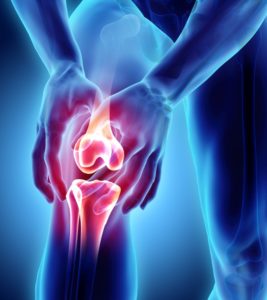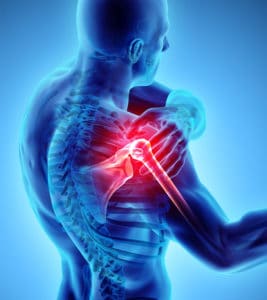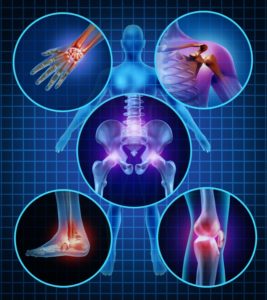Dislocated Shoulder/Instability
What is a Shoulder Dislocation?
The shoulder is the most mobile joint in the body due to its wide range of motion. This high degree of mobility permits us to perform a wide range of motions, but it equally makes the shoulder susceptible to injury. A shoulder dislocation can occur when the ball and socket within the shoulder joint separates. A dislocation will create shoulder instability by allowing the ball (humeral head) to move beyond the normal constraints placed by the socket (glenoid bone). Most common dislocations occur in a forward direction however downward and backward dislocations can also occur. A dislocated shoulder is a common injury in athletes and can also occur due to a fall.
When the shoulder dislocates, especially in young individuals, they are at an increased risk of repeat shoulder dislocations. A shoulder dislocation will result in weakening of the shoulder ligaments and then will contribute to progressive shoulder instability.
What are the Symptoms of a Dislocated Shoulder?
- Significant shoulder pain
- Inability to move the arm
- Obvious deformity of the shoulder joint
- Arm numbness
- Shoulder weakness
- A popping sensation
How do you know if you have a Dislocated Shoulder?
A dislocated shoulder typically occurs from a fall or a severe sports injury in which there is a sudden onset of pain and inability to move the shoulder. Urgent medical care should be sought in order to “reduce” the shoulder joint to its original position. Occasionally patients may experience reduction naturally without medical assistance. However, many times a reduction requires sedation of the patient and manipulation of the shoulder by a physician in order to reduce the dislocated shoulder and place the ball back into the socket.
Once the shoulder is reduced to its proper position, Dr. Natividad will perform a physical examination to include x-rays and an MRI to determine the severity of the shoulder instability and extent of damage. This evaluation and diagnostic tests will help guide the decision making process for appropriate treatment intervention.
When does a Dislocated Shoulder require Surgery?
Treatment of a shoulder dislocation is dependent on several different factors: Patient’s age, history of past shoulder dislocations, activity level and injury severity.
Following a dislocation, Dr. Natividad recommends a short duration of immobilization in a sling or immobilizer for several weeks to be followed by a physical therapy program in order to strengthen the surrounding muscles to stabilize the shoulder joint, restore range of motion and improve functional mobility.
In cases where patients have persistent shoulder instability and/or pain, consideration for shoulder stabilization surgery is appropriate. Arthroscopic shoulder surgery to repair the injured labrum and tighten the ligaments is performed as an outpatient. Physical therapy is typically started 2 weeks after surgery. Total recovery time to return to full work or sporting activities is approximately 4 – 5 months.













